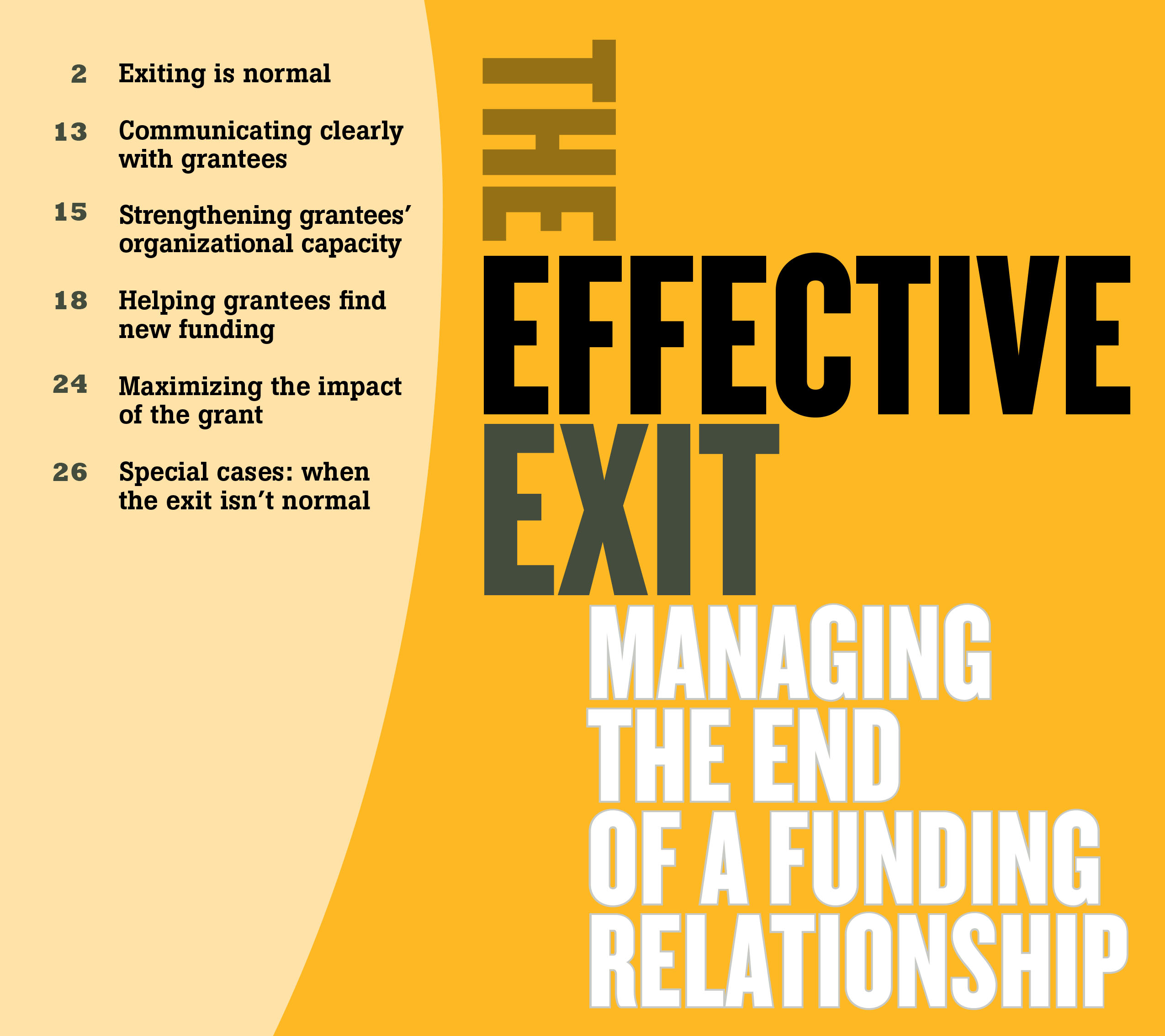Funding for Community Organizing An Example from a Private Foundation
The Context
Foundation
- Private foundation that focuses on a major East Coast city
- Committed to supporting local nonprofits and expanding services to underserved population groups, especially immigrants
- Half of all grants go to startup organizations, the other half to established groups
Field or Community
- Grassroots organizations; many strongly identified with a particular neighborhood, population, or issue
- Emphasis on community organizing and increasing services to underserved populations
- Mainly small organizations, with inspired and visionary (but often inexperienced) leadership other funders
Other Funders
- A large field of local funders
- Relatively few willing to fund start-ups or provide operating support
The Strategy
Program
- Provide operating support over an extended period: for start-ups, five years, renewable annually, “barring disasters”
- Offer technical assistance, including workshops and access to consultants, and small, special purpose grants for institutional development
- Build ongoing relationships with technical assistance providers that understand the local environment for small nonprofits
- Maintain tolerance for supporting “risky” organizations
Exit and Beyond
- Review institutional development checklist during annual site visits, especially in years three and four
- Follow up personally and by tapping partners and consultants in areas where growth is needed
Lessons and Advice
Be proactive about encouraging grantees’ institutional growth. “The three of us [program officers] go over what we find on the site visits. We might say, ‘This group really could benefit from a small grant to do a board retreat.’ That gives us a heads-up to give that group a call and say, ‘Hey, have you tried this?’ . . . That said, we also feel like what we do best is give out the money. We’re not trying to be technical assistance providers. We feel that technical assistance is a little bit like therapy: the group has got to recognize they have a problem and want to solve it. No matter what we say as program officers, if they don’t see it, it’s not going to be a good use of their time.”
Define success in broad terms. “We funded a group of women in one community who hired a staff person and did a lot of great stuff around domestic violence. Our grant ended, and they’ve never had a full-time staff person again. We don’t think of that grant as a failure because of the good work that was done over the five years. Also, they raised the profile of a particular ethnic group and improved services to that community. We don’t necessarily feel that every organization has to become an ongoing, traditional-looking nonprofit at the end of five years.”



